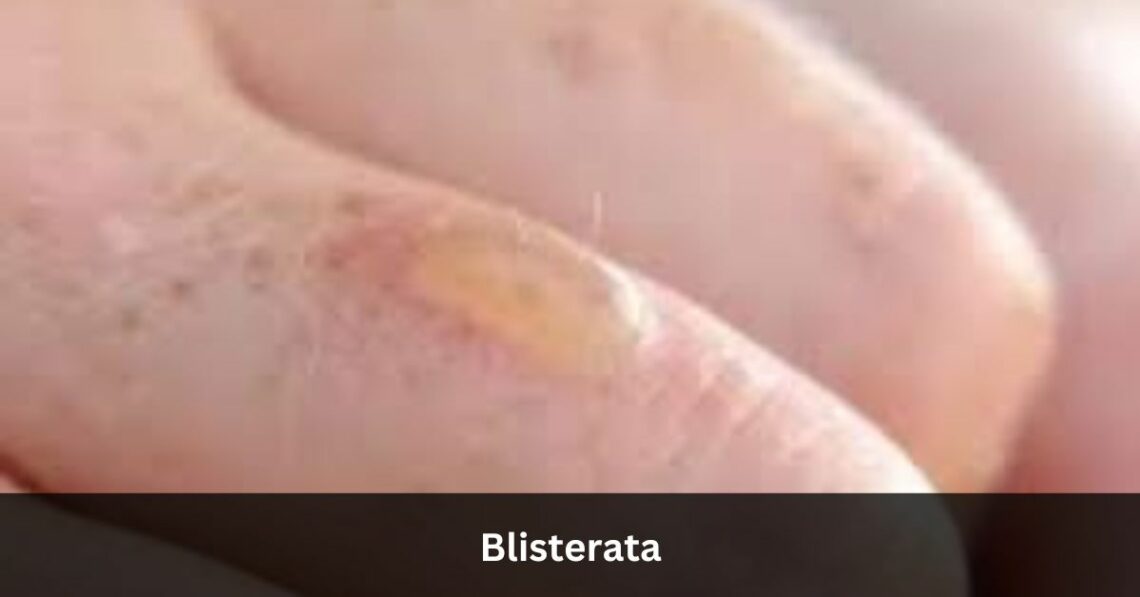
Blisterata – Here To Know!
Blisterata – a term that sounds like it belongs in a science fiction novel, yet it’s an intriguing phenomenon that has captured the curiosity of scientists and enthusiasts alike.
The name itself evokes images of something mysterious, perhaps even otherworldly. But what exactly is Blisterata
And why is it worthy of our attention? In this comprehensive article, we delve deep into the world of Blisterata, exploring its origins, manifestations, potential implications, and the ongoing quest to understand this enigmatic occurrence.
Origins of Blisterata – Check Now!
The term “Blisterata” is not found in conventional scientific literature; rather, it’s a term coined by enthusiasts and researchers to describe a peculiar phenomenon observed primarily in certain natural environments. The exact origins of the term are unclear, but it likely emerged from the descriptive nature of the phenomenon itself.
Blisterata refers to the formation of blister-like structures on various surfaces, ranging from rocks and tree bark to human skin and even artificial materials. These blisters can vary in size, shape, and composition, but they share a common characteristic: their sudden and often unexplained appearance.
Manifestations and Characteristics – Read It Now!
Blisterata manifests in a myriad of ways, making it a challenging subject of study. One of the most common manifestations is observed in geologic formations, where blister-like protrusions form on the surface of rocks. These blisters can range from small, millimeter-sized nodules to larger, bulbous structures several centimeters in diameter. In some cases, the blisters are filled with a liquid substance, while in others, they appear to be solid throughout.
Interestingly, Blisterata is not limited to geological settings; it also occurs in biological systems. For example, certain species of plants exhibit blister-like growths on their leaves or stems, which can result from various factors such as disease, insect infestation, or environmental stressors.

In humans, Blisterata can manifest as a skin condition characterized by the sudden appearance of fluid-filled blisters, often accompanied by itching or discomfort. Additionally, researchers have documented instances of Blisterata occurring on synthetic materials, such as plastics or ceramics, though the underlying mechanisms remain poorly understood.
Exploring Possible Explanations – Delve More!
The diversity of environments in which Blisterata occurs poses a significant challenge to understanding its underlying causes. However, researchers have proposed several hypotheses to explain this intriguing phenomenon.
1. Chemical Reactions:
One possibility is that Blisterata arises from chemical reactions occurring at the interface between different materials. For example, the interaction between minerals in rocks and substances present in the surrounding environment could lead to the formation of gas pockets within the rock, causing it to blister. Similarly, interactions between plant tissues and external stimuli may trigger the formation of blisters as a defense mechanism.
2. Biological Processes:
In biological systems, Blisterata may result from a range of biological processes, including infection, inflammation, or cellular dysfunction. For instance, the formation of blisters on plant tissues could be a response to pathogens or herbivory, while blistering skin conditions in humans may stem from autoimmune disorders or allergic reactions.
3. Environmental Factors:
Environmental factors such as temperature fluctuations, humidity levels, and exposure to sunlight may also play a role in the development of Blisterata. Certain conditions may promote the accumulation of moisture or the degradation of materials, leading to the formation of blisters over time.
4. Mechanical Stress:
Mechanical stressors, such as pressure or friction, can induce blistering in both natural and synthetic materials. For example, repeated flexing or bending of a material may cause it to weaken and blister, as observed in certain types of plastics or textiles.
Challenges and Future Directions – Unlock Now!
Despite decades of research, Blisterata remains a poorly understood phenomenon with many unanswered questions. One of the primary challenges in studying Blisterata is its unpredictable nature and diverse manifestations. Additionally, the interdisciplinary nature of Blisterata – spanning fields such as geology, biology, materials science, and chemistry – further complicates efforts to unravel its mysteries.
Moving forward, interdisciplinary collaboration and innovative research approaches will be crucial for advancing our understanding of Blisterata. New technologies, such as advanced imaging techniques and computational modeling, offer promising avenues for investigating the underlying mechanisms driving blister formation across different scales – from atomic interactions to ecosystem dynamics.

Moreover, studying Blisterata in controlled laboratory settings could help researchers isolate key variables and test hypotheses under controlled conditions. By systematically manipulating environmental factors, materials properties, and biological variables, scientists can gain insights into the fundamental processes driving blister formation and identify potential applications in fields such as materials engineering, medicine, and environmental science.
Implications and Applications – Unleash Now!
While the study of Blisterata may seem esoteric at first glance, it has the potential to yield valuable insights with practical implications. Understanding the mechanisms underlying blister formation could inform the development of novel materials with enhanced durability, flexibility, and resistance to environmental stressors. For example, insights gleaned from studying blistering phenomena in synthetic polymers could inspire the design of self-healing materials capable of repairing damage autonomously.
Furthermore, insights from Blisterata research may have implications for fields such as agriculture, forestry, and medicine. By elucidating the biological processes underlying blister formation in plants and animals, researchers may uncover new strategies for disease management, pest control, and wound healing. Similarly, understanding the factors contributing to skin blistering disorders in humans could lead to improved diagnostics and therapeutic interventions for conditions such as pemphigus and bullous pemphigoid.
Conclusion:
Blisterata represents a fascinating intersection of geology, biology, materials science, and environmental science.
FAQs:
1. What is Blisterata?
Blisterata is a rare skin condition characterized by the formation of multiple blisters on the skin, often accompanied by itching or burning sensations.
2. What causes Blisterata?
Blisterata can be caused by various factors including autoimmune disorders, allergic reactions, infections, or exposure to certain chemicals or medications.
3. Is Blisterata contagious?
Blisterata itself is not contagious; however, if it’s caused by an infectious agent like a virus or bacteria, those agents may be contagious.
4. How is Blisterata diagnosed?
Diagnosis of Blisterata typically involves a physical examination, medical history review, and sometimes a biopsy or blood tests to determine the underlying cause.
5. Can Blisterata be treated?
Treatment for Blisterata aims to alleviate symptoms and address the underlying cause. This may include topical medications, oral medications, or addressing any triggering factors.
6. What are the complications of Blisterata?
Complications of Blisterata can include scarring, secondary infections of the blisters, and in severe cases, systemic effects if the underlying cause is a serious medical condition.
You May Also Like

YouTube Downloader Online – Experts Review In 2024
February 23, 2024
Unveiling the Power of Digital News Alerts: Stay Informed, Stay Ahead
April 24, 2024


Average Rating